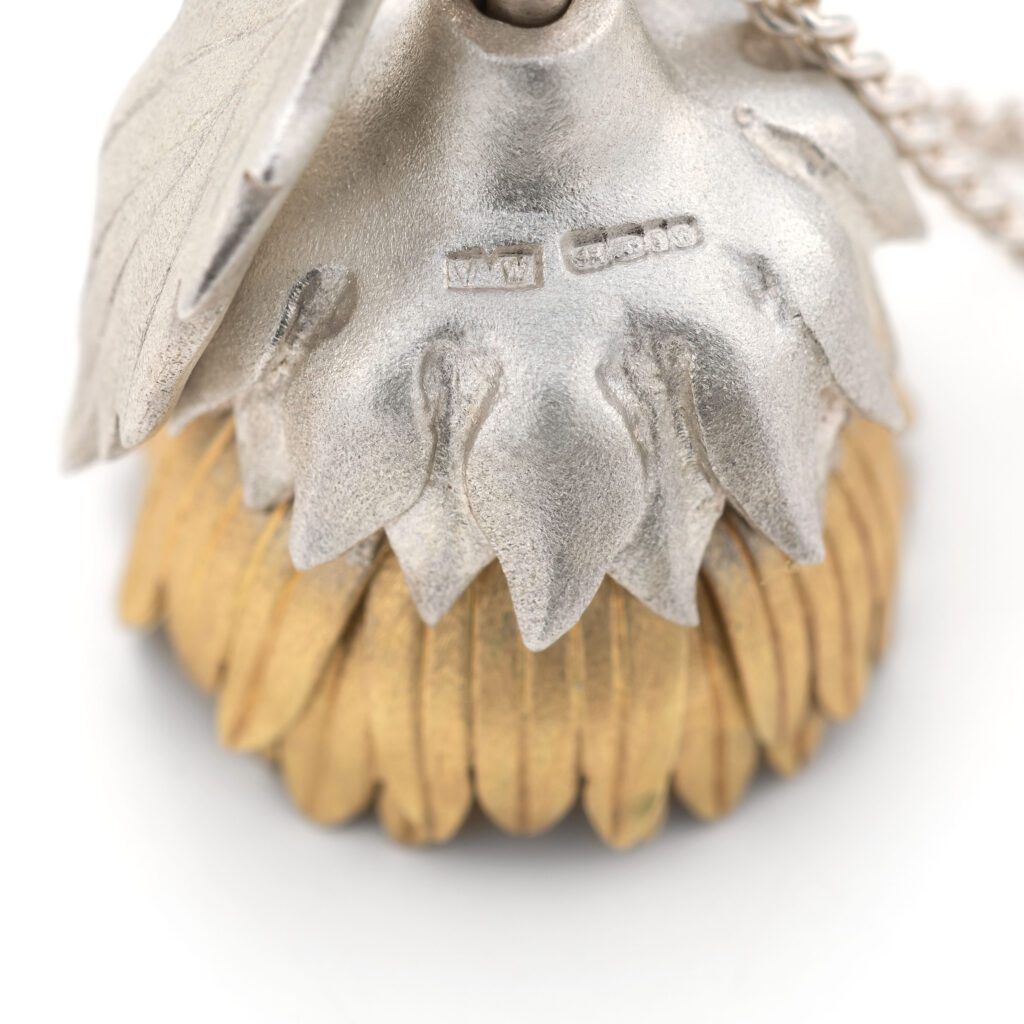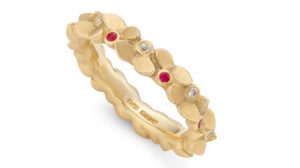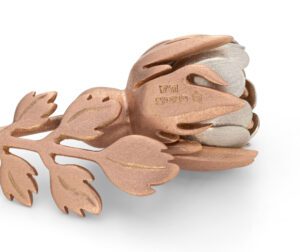What is the Meaning of a Jewellery Hallmark?
A hallmark is the little stamp you see on jewellery, usually hidden inside a ring or in other discrete places such as an ear wire or clasp. Primarily the main purpose of these marks is to act as proof of the purity of the metal for the buyer. But hallmarks can tell you so much more than that. Much like a certificate of authenticity for a piece of art, hallmarks can also tell you about who made the piece, what date it was made and even about significant historical events that were taking place at the time, such as the coronation of King Charles III in 2023.
In the UK, items made from gold, silver and platinum (and most recently, palladium too) must all be hallmarked by one of the four Assay Offices by law. This law was introduced in the early 1300s by King Edward I, and the UK is one of the only countries in the world to make jewellery hallmarking compulsory.
Why Do We Hallmark Jewellery?
As well as providing a range of information on the provenance of a piece of jewellery, hallmarking also distinguishes real precious metal jewellery from counterfeits. With gold plating and the sometimes nuanced difference in the colour of precious metals, a hallmark can instantly tell you exactly what metal you’re holding.
Pure gold and silver are too soft to withstand the stresses of everyday wear so are rarely used to make jewellery. Most precious metals are blended with different alloys to give added strength and durability. A hallmark not only helps us to identify the fineness of the metals used, but also confirms that the piece has been independently tested to conform to quality standards.
What Makes a Hallmark?
In order to be classed as ‘precious’, a piece of jewellery (over a specific weight) must be comprised of a minimum amount of the precious metal in question, and this is described as its ‘fineness’. The fineness mark guarantees that the percentage of the precious metal in your jewellery will never be less than the fineness depicted in its hallmark. For example, you may be familiar with a ‘925’ mark on silver jewellery and this is the fineness mark for Sterling silver.
On any hallmarked piece of jewellery, you will find three compulsory marks which tell you:
- The person or company who made the piece (the ‘Makers’ mark)
- The fineness of the metal
- The Assay Office where the jewellery was tested and hallmarked
Optional extra marks include Traditional fineness marks, date marks and commemorative marks.
The four UK Assay Offices each have their own unique mark depicted by a lions head for London, an anchor for Birmingham, a Rose for Sheffield and a Castle for Edinburgh.
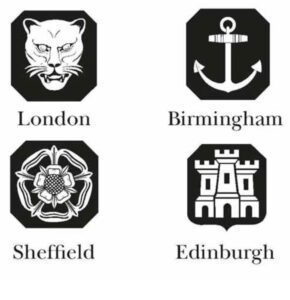
The four UK Assay Office marks
Maker’s Marks
Much like a painter would sign a painting, jewellers and silversmiths have a ‘makers mark’ stamped onto their pieces – usually their their initials (mine is a VW) or some other emblem or logo which certifies that the piece was made by them, and this can change over time. Iconic jewellers Tiffany & Co. has featured several maker’s marks throughout their 186-year history, including ‘Tiffany & Co.’ and ‘T & Co.’ Modern Cartier jewellery is always engraved with the Cartier logo, along with a serial number unique to each individual piece.
For me, a hallmark is something to take pride in. Not only as a sign of quality of the materials used, but as a physical indentation of my ‘signature’ on my work. With limited space on jewellery, these marks are very small, but with larger silversmithing pieces, hallmarks are often scaled up and celebrated in a prominent position.
What does 18ct (carat) Mean?
The measurement of purity of gold alloyed with other metals is called ‘caratage’. The term ‘24 carat’ denotes pure gold with no other metals, whilst ‘18 carat’ gold contains 75% gold and 25% other metals (often copper or silver), therefore, 18ct gold is represented by the number ‘750’ and so on. The current hallmarks for each metal carat used for jewellery in the UK are as below:
- Gold – 9ct (375), 14ct (585), 18ct (750) and 22ct (916)
- Silver – Sterling silver (925) and Britannia silver (999)
- Platinum – 950
- Palladium – 500 and 950
Commemorative Jewellery Hallmarks
Commemorative hallmarks carry a specific narrative and can pinpoint a particular time in history, which can add unique value to a piece of jewellery or silversmithing. When new hallmarks are introduced in celebration of a special event, jewellers and silversmiths can request this additional mark on their work. The UK Assay Offices have a long tradition of capturing special events with the creation of commemorative hallmarks. When Her Majesty The Queen became the first British Monarch to celebrate a Platinum Jubilee in 2021, the London Assay office commissioned a mark to celebrate her seventy years of service. The commemorative hallmark depicted an orb and reflected the traditional fineness mark for platinum.
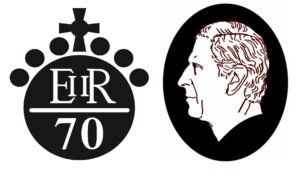
The Platinum Jubilee mark & King Charles III Coronation mark
A mark to celebrate the Coronation of King Charles III on 6th May 2023 depicts the King’s head against an oval background and it can be applied to gold, silver, platinum or palladium items until 31st Dec 2024. If you would like to add this mark to your Victoria Walker jewellery piece, please contact me (subject to additional cost and lead time).
The hallmarks you will find on Victoria Walker jewellery are my makers mark (VW), the London Assay Office mark (a lions head), a date mark (represented by a letter inside a shape) and usually a traditional fineness mark too (a crown for gold). One of the many pleasures of working with such a durable material as metal is knowing that the piece will be enjoyed for generations to come and hopefully still be worn and loved long after I’m gone. It’s lovely to know that collectors of my work (and those who inherit it) will always have the origins of where it came from right there in the metal, told through these tiny story telling marks.

